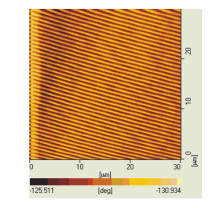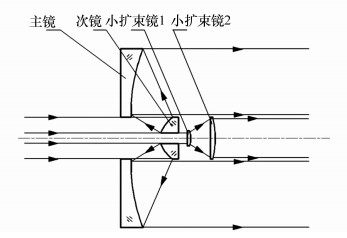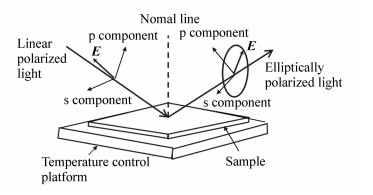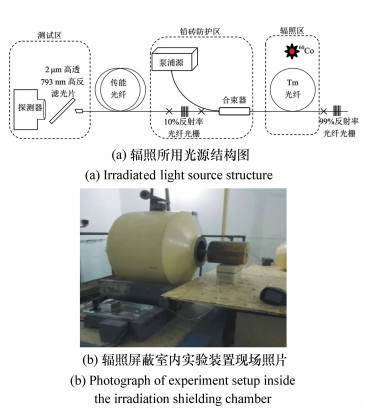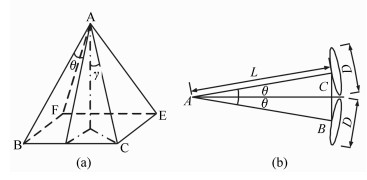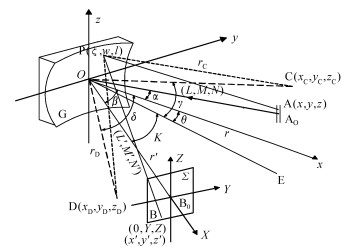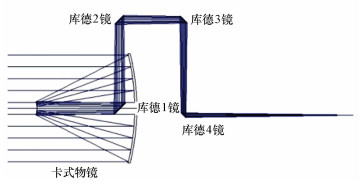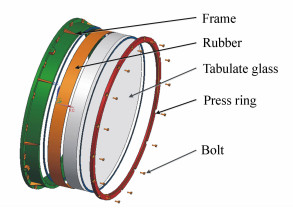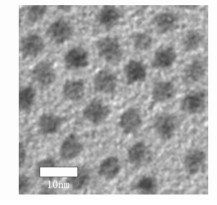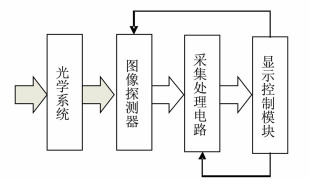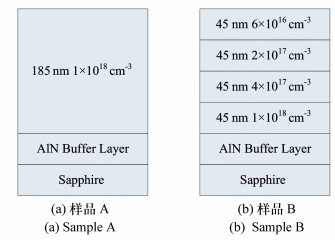2018 Vol. 11, No. 4
2018, 11(4): 531-549.
doi: 10.3788/CO.20181104.0531
Abstract:
In this paper, the diagnostic requirements and challenges of turbulent combustion in industrial engines are introduced. The main parameters for laser measurement techniquese such as concentration, temperature, and velocity of the combustion flow field are presented. The basic principles of the measurement technology, the application in combustion field diagnosis and the research status at home and abroad are described, and the characteristics and applicability of different technologies are analyzed. The role and progress of multi-parameter comprehensive diagnosis are briefly introduced. The main problems and trends in the current diagnosis and measurement are discussed.
In this paper, the diagnostic requirements and challenges of turbulent combustion in industrial engines are introduced. The main parameters for laser measurement techniquese such as concentration, temperature, and velocity of the combustion flow field are presented. The basic principles of the measurement technology, the application in combustion field diagnosis and the research status at home and abroad are described, and the characteristics and applicability of different technologies are analyzed. The role and progress of multi-parameter comprehensive diagnosis are briefly introduced. The main problems and trends in the current diagnosis and measurement are discussed.
2018, 11(4): 550-559.
doi: 10.3788/CO.20181104.0550
Abstract:
Based on the strong spectral correlation between adjacent bands of hyperspectral images, we proposes a compressed sensing algorithm that uses edge information to design dynamic measurement rate to improve the reconstruction effect of compressive sensing in hyperspectral images. First, each image block is sampled at a fixed measurement rate by a random projection block-compressive sensing method, a single-band image is reconstructed as a priori information of other bands, and an image edge region is extracted therefrom; then, the measurement values are adaptively assigned according to the richness of the edge information of each image block. With a certain total number of measurements, different number of measurements is assigned to different image blocks. Finally, the remaining wave bands are collected and reconstructed with the assigned measurements. The simulation results show that under the same total number of measurements, the hyperspectral image quality(Peak Signal to Noise Ratio(PSNR)) reconstructed by the dynamic measurement algorithm proposed in this paper is 1-4 dB higher than the traditional fixed-measurement compressive sensing strategy. Moreover, the reconstruction time is also reduced, and the image quality at the detail is further enhanced based on the successful reconstruction of the hyperspectral images.
Based on the strong spectral correlation between adjacent bands of hyperspectral images, we proposes a compressed sensing algorithm that uses edge information to design dynamic measurement rate to improve the reconstruction effect of compressive sensing in hyperspectral images. First, each image block is sampled at a fixed measurement rate by a random projection block-compressive sensing method, a single-band image is reconstructed as a priori information of other bands, and an image edge region is extracted therefrom; then, the measurement values are adaptively assigned according to the richness of the edge information of each image block. With a certain total number of measurements, different number of measurements is assigned to different image blocks. Finally, the remaining wave bands are collected and reconstructed with the assigned measurements. The simulation results show that under the same total number of measurements, the hyperspectral image quality(Peak Signal to Noise Ratio(PSNR)) reconstructed by the dynamic measurement algorithm proposed in this paper is 1-4 dB higher than the traditional fixed-measurement compressive sensing strategy. Moreover, the reconstruction time is also reduced, and the image quality at the detail is further enhanced based on the successful reconstruction of the hyperspectral images.
2018, 11(4): 560-567.
doi: 10.3788/CO.20181104.0560
Abstract:
A priori constraint of the chromatic aberration of "the edges of the same object should be in the same position in the three color channels" is proposed by analyzing the correlation between the three channels of the natural image edge in this paper.The priori constraint is mathematically approximated as the relative derivative of each channel.Based on this chromatic aberration prior constraint, a new aberration correction model, namely the image deconvolution model, is established, and a model solving algorithm based on ADMM is given.The experimental results show that this aberration correction technique can improve the peak SNR of image by more than 10 dB, which is much better than the current mainstream algorithms such as BM3D and YUV.Moreover, the visual image performance is greatly enhanced, thus basically meets the common optical system correction requirements for aberrations.
A priori constraint of the chromatic aberration of "the edges of the same object should be in the same position in the three color channels" is proposed by analyzing the correlation between the three channels of the natural image edge in this paper.The priori constraint is mathematically approximated as the relative derivative of each channel.Based on this chromatic aberration prior constraint, a new aberration correction model, namely the image deconvolution model, is established, and a model solving algorithm based on ADMM is given.The experimental results show that this aberration correction technique can improve the peak SNR of image by more than 10 dB, which is much better than the current mainstream algorithms such as BM3D and YUV.Moreover, the visual image performance is greatly enhanced, thus basically meets the common optical system correction requirements for aberrations.
2018, 11(4): 568-575.
doi: 10.3788/CO.20181104.0568
Abstract:
Due to the constraints of the sampling theorem, it is not possible to flexibly control the diffractive frame size of the single Fourier transform algorithm and the number of effective content pixels and it is highly likely that the size of the diffractive surface frame does not match the diffraction distance.To solve this problem, we propose a step diffraction algorithm.First, in the case of a fixed number of samples, the wavelength of the light, the size of the initial diffraction surface, and the final diffractive frame size can be controlled by the split diffraction distance ratio.Then, the single-diffraction calculation results are compared with the segmented diffraction calculation results for image similarity.Experiments show that the step diffraction algorithm can increase the number of effective pixels and the data volume increases by 2-3 orders of magnitude.In addition, the following conclusion is drawn:one of the main causes of errors is the difference between the distribution of details and the low-resolution pixel values after the resolution of the effective data is increased, and it is also known that the richer the image details, the greater the difference.Therefore, this difference should be regarded as a better result than that of direct calculation.Through this algorithm, clearer image details can be obtained, and the size of the diffraction surface frame can be flexibly adjusted, so that the S-FFT algorithm can exert its algorithm advantage in the calculation of the large diffraction distance problem.
Due to the constraints of the sampling theorem, it is not possible to flexibly control the diffractive frame size of the single Fourier transform algorithm and the number of effective content pixels and it is highly likely that the size of the diffractive surface frame does not match the diffraction distance.To solve this problem, we propose a step diffraction algorithm.First, in the case of a fixed number of samples, the wavelength of the light, the size of the initial diffraction surface, and the final diffractive frame size can be controlled by the split diffraction distance ratio.Then, the single-diffraction calculation results are compared with the segmented diffraction calculation results for image similarity.Experiments show that the step diffraction algorithm can increase the number of effective pixels and the data volume increases by 2-3 orders of magnitude.In addition, the following conclusion is drawn:one of the main causes of errors is the difference between the distribution of details and the low-resolution pixel values after the resolution of the effective data is increased, and it is also known that the richer the image details, the greater the difference.Therefore, this difference should be regarded as a better result than that of direct calculation.Through this algorithm, clearer image details can be obtained, and the size of the diffraction surface frame can be flexibly adjusted, so that the S-FFT algorithm can exert its algorithm advantage in the calculation of the large diffraction distance problem.
2018, 11(4): 576-581.
doi: 10.3788/CO.20181104.0576
Abstract:
The advantages of organic lasers with DFB distributed feedback structures have attracted much attention, however, there are few reports on the principle of multi-beam organic lasers using high-order Bragg feedback. Different from single-waveguide or single-beam lasers implemented by low-order Bragg feedback in the past, high-order Bragg feedback is introduced into a planar organic semiconductor waveguide to produce red and blue multi-beam organic lasers in this paper. Using a fourth-order Bragg feedback and PVK:DCJTI film, a three-beam red laser is realized with an exit angle of ±53° and 0.5°. A four-beam blue laser is implemented using a fifth-order Bragg feedback and PS:DSA-ph film with exit angles of ±18° and ±75°. The relationship between higher-order Bragg grating feedback and device characteristics is studied by combination of plane waveguide and grating coupling. The results show that the theoretically calculated beam coupling angle is consistent with the actual test, which provides guidance for the design of multi-beam organic laser devices to some extent.
The advantages of organic lasers with DFB distributed feedback structures have attracted much attention, however, there are few reports on the principle of multi-beam organic lasers using high-order Bragg feedback. Different from single-waveguide or single-beam lasers implemented by low-order Bragg feedback in the past, high-order Bragg feedback is introduced into a planar organic semiconductor waveguide to produce red and blue multi-beam organic lasers in this paper. Using a fourth-order Bragg feedback and PVK:DCJTI film, a three-beam red laser is realized with an exit angle of ±53° and 0.5°. A four-beam blue laser is implemented using a fifth-order Bragg feedback and PS:DSA-ph film with exit angles of ±18° and ±75°. The relationship between higher-order Bragg grating feedback and device characteristics is studied by combination of plane waveguide and grating coupling. The results show that the theoretically calculated beam coupling angle is consistent with the actual test, which provides guidance for the design of multi-beam organic laser devices to some extent.
2018, 11(4): 582-589.
doi: 10.3788/CO.20181104.0582
Abstract:
In order to meet the requirements of high-power laser emission, a large-diameter composite laser beam expander without central obscuration based on Cassegrain system is proposed to eliminate the central obscuration of the Cassegrain system and improve the laser emission efficiency. Based on the principle of the Cassegrain system and its structural characteristics, combined with the characteristics of the Galileo refraction type beam expander, a composite laser beam expander without central obscuration with an emission aperture of 550 mm is designed. Using a combination of a reflective beam expander and a refractive beam expander, a through hole is opened in the center of the Cassegrain secondary mirror so that the center is passed through the obscured laser. The rear side is connected to a Galileo-type refracting beam expander, which expands the beam transmitted through the center, and the two beams are emitted coaxially. The laser transmittance test is carried out on a new type of composite beam expander. The experimental results show that for the laser of 10.6 μm wavelength, the transmittance is more than 95.21%, which is 22.12% higher than that of the traditional Cassegrain beam expander.
In order to meet the requirements of high-power laser emission, a large-diameter composite laser beam expander without central obscuration based on Cassegrain system is proposed to eliminate the central obscuration of the Cassegrain system and improve the laser emission efficiency. Based on the principle of the Cassegrain system and its structural characteristics, combined with the characteristics of the Galileo refraction type beam expander, a composite laser beam expander without central obscuration with an emission aperture of 550 mm is designed. Using a combination of a reflective beam expander and a refractive beam expander, a through hole is opened in the center of the Cassegrain secondary mirror so that the center is passed through the obscured laser. The rear side is connected to a Galileo-type refracting beam expander, which expands the beam transmitted through the center, and the two beams are emitted coaxially. The laser transmittance test is carried out on a new type of composite beam expander. The experimental results show that for the laser of 10.6 μm wavelength, the transmittance is more than 95.21%, which is 22.12% higher than that of the traditional Cassegrain beam expander.
2018, 11(4): 590-603.
doi: 10.3788/CO.20181104.0590
Abstract:
In this paper, a high efficiency and high reliability 915 nm semiconductor laser is designed and fabricated, which is a key component of the fiber lasers. In order to maximize the electro-optic conversion efficiency of the device, a double asymmetric large-cavity waveguide structure is adopted in the design, and the quantum well structure, waveguide structure, doping, and device structure are systematically optimized. Device simulations show that the device's maximum electro-optical conversion efficiency reaches 67% at an ambient temperature of 25℃. The material is grown by Metal Organic Chemical Vapor Deposition(MOCVD), and a laser chip having a light emitting region width of 95 μm and a cavity length of 4.8 mm is prepared. Tests show that the efficiency of the packaged device and other parameter indices have reached the advanced level of similar devices in the world. In the case that the threshold current is 1 A at room temperature, the slope efficiency is 1.18 W/A, the maximum electro-optic conversion efficiency is 66.5%, the output power is 12 W, and the electro-optical conversion efficiency reaches 64.3%. It can be seen that the test results are in good agreement with that of the device theory simulation. After approximately 6 000 hours of long-life accelerated testing, the device power does not attenuate, indicating that the produced high-power 915 nm laser chip has very high reliability.
In this paper, a high efficiency and high reliability 915 nm semiconductor laser is designed and fabricated, which is a key component of the fiber lasers. In order to maximize the electro-optic conversion efficiency of the device, a double asymmetric large-cavity waveguide structure is adopted in the design, and the quantum well structure, waveguide structure, doping, and device structure are systematically optimized. Device simulations show that the device's maximum electro-optical conversion efficiency reaches 67% at an ambient temperature of 25℃. The material is grown by Metal Organic Chemical Vapor Deposition(MOCVD), and a laser chip having a light emitting region width of 95 μm and a cavity length of 4.8 mm is prepared. Tests show that the efficiency of the packaged device and other parameter indices have reached the advanced level of similar devices in the world. In the case that the threshold current is 1 A at room temperature, the slope efficiency is 1.18 W/A, the maximum electro-optic conversion efficiency is 66.5%, the output power is 12 W, and the electro-optical conversion efficiency reaches 64.3%. It can be seen that the test results are in good agreement with that of the device theory simulation. After approximately 6 000 hours of long-life accelerated testing, the device power does not attenuate, indicating that the produced high-power 915 nm laser chip has very high reliability.
2018, 11(4): 604-609.
doi: 10.3788/CO.20181104.0604
Abstract:
Optical payloads in space remote sensing applications impose increasingly high requirements on system polarization control. As a wide spectral reflector, the polarization characteristics of silver thin film mirror usually changes with the ambient temperature. In this paper, silver thin film mirrors with low polarization sensitivity are designed and fabricated. The changes of polarization characteristics and reflection spectrum of the mirrors with room temperature from 25℃ to 150℃ are investigated at 45° and 60° incident angles. The refractive index of silver thin film increases in spectral range of 350 nm to 1 200 nm with the increase of temperature. The phase difference Δ between the s and p light in the reflected light of the silver film mirror is reduced in the wavelength range of 350 to 600 nm, keep stable in 600-650 nm, and increases in the wavelength range of 650 to 1 200 nm. The surface morphology of the silver film and mirror changes, and the surface scattering and absorption increases when temperature reaches 125℃, resulting in a decrease in reflectivity in the 350-900 nm band and even a decrease of about 25% in the wavelength of 350 nm.
Optical payloads in space remote sensing applications impose increasingly high requirements on system polarization control. As a wide spectral reflector, the polarization characteristics of silver thin film mirror usually changes with the ambient temperature. In this paper, silver thin film mirrors with low polarization sensitivity are designed and fabricated. The changes of polarization characteristics and reflection spectrum of the mirrors with room temperature from 25℃ to 150℃ are investigated at 45° and 60° incident angles. The refractive index of silver thin film increases in spectral range of 350 nm to 1 200 nm with the increase of temperature. The phase difference Δ between the s and p light in the reflected light of the silver film mirror is reduced in the wavelength range of 350 to 600 nm, keep stable in 600-650 nm, and increases in the wavelength range of 650 to 1 200 nm. The surface morphology of the silver film and mirror changes, and the surface scattering and absorption increases when temperature reaches 125℃, resulting in a decrease in reflectivity in the 350-900 nm band and even a decrease of about 25% in the wavelength of 350 nm.
2018, 11(4): 610-614.
doi: 10.3788/CO.20181104.0610
Abstract:
In order to realize the space application of 2 μm thulium-doped fiber laser, the experimental study of γ-ray irradiation effect is carried out for typical commercial Tm-doped fiber(TDF). Using a gamma ray of 60Co, the irradiation effect of a total dose of 9.0 krad(Si) and a dose rate of 0.5-3.0 rad/s is performed on a 2 μm fiber laser constructed from 5 groups of the same TDF samples batch of SM-TDF-10P/130-HE produced by Nufern. The measurement results show that the light emission performance of TDF greatly attenuated during irradiation, and the attenuation amplitude increases with the increase of the dose rate. By comparing the absorption spectra of the TDF sample before and after irradiation, it is found that the absorption peak of the 793 nm pump light disappeared with the irradiation of the total dose of 9 krad(Si). The above-mentioned irradiated TDF sample is subjected to a 793 nm pump photobleaching test for 2 hours, and no performance recovery is observed. It can be seen that the space radiation performance of typical Tm-doped fiber has to be improved for space applications.
In order to realize the space application of 2 μm thulium-doped fiber laser, the experimental study of γ-ray irradiation effect is carried out for typical commercial Tm-doped fiber(TDF). Using a gamma ray of 60Co, the irradiation effect of a total dose of 9.0 krad(Si) and a dose rate of 0.5-3.0 rad/s is performed on a 2 μm fiber laser constructed from 5 groups of the same TDF samples batch of SM-TDF-10P/130-HE produced by Nufern. The measurement results show that the light emission performance of TDF greatly attenuated during irradiation, and the attenuation amplitude increases with the increase of the dose rate. By comparing the absorption spectra of the TDF sample before and after irradiation, it is found that the absorption peak of the 793 nm pump light disappeared with the irradiation of the total dose of 9 krad(Si). The above-mentioned irradiated TDF sample is subjected to a 793 nm pump photobleaching test for 2 hours, and no performance recovery is observed. It can be seen that the space radiation performance of typical Tm-doped fiber has to be improved for space applications.
2018, 11(4): 615-622.
doi: 10.3788/CO.20181104.0615
Abstract:
In order to realize the framing function of high-speed cameras, we proposes a high-speed camera optical system using multi-angle coupled framing methods. The framing structure uses multiple groups of the same optical system and is evenly distributed on the circumference parallel to the object plane. The same object surface is photographed from different angles. Each group is guaranteed to have the same object field of view. The angle between the optical axis of the optical system and the object plane is the same, and the best imaging of the entire field of view is obtained through optimization design. According to the requirements, a telephoto optical system in multi-angle-coupled quadrant imaging is designed using optical design software and a three-dimensional simulation model is drawn. The image quality, luminance, distortion, and other relevant parameters of each group are analyzed, and at a frequency of 50lp/mm, the modulation transfer function(MTF) is not less than 0.5, the F number is 2, and the distortion is less than 0.4%. Compared with the commonly used prism and reflective pyramidal spectroscopy, the surface illumination can be increased by more than 4 times without additional splitting structure. The results show that the imaging quality is ideal and the image formation consistency of the image planes of the framing camera system is satisfied.
In order to realize the framing function of high-speed cameras, we proposes a high-speed camera optical system using multi-angle coupled framing methods. The framing structure uses multiple groups of the same optical system and is evenly distributed on the circumference parallel to the object plane. The same object surface is photographed from different angles. Each group is guaranteed to have the same object field of view. The angle between the optical axis of the optical system and the object plane is the same, and the best imaging of the entire field of view is obtained through optimization design. According to the requirements, a telephoto optical system in multi-angle-coupled quadrant imaging is designed using optical design software and a three-dimensional simulation model is drawn. The image quality, luminance, distortion, and other relevant parameters of each group are analyzed, and at a frequency of 50lp/mm, the modulation transfer function(MTF) is not less than 0.5, the F number is 2, and the distortion is less than 0.4%. Compared with the commonly used prism and reflective pyramidal spectroscopy, the surface illumination can be increased by more than 4 times without additional splitting structure. The results show that the imaging quality is ideal and the image formation consistency of the image planes of the framing camera system is satisfied.
2018, 11(4): 623-629.
doi: 10.3788/CO.20181104.0623
Abstract:
The curvature radius error in the Seya-Namioka grating process can cause defocus aberration, which may have a great impact on the spectral performance of the grating monochromator. Based on the theory of ray tracing, we simulate and analyze the impact of curvature radius error on Seya-Namioka grating. The analysis results show that the length of the entrance and exit arm has a good compensating effect on the curvature radius error. By adjusting the length of the entrance and exit arm, the allowable range of the curvature radius error can be increased to about 2 mm. If the total adjustment amount is not changed and the length of the access arm is arbitrarily changed, the compensation effect is similar. As the error increases, the length of the arm that needs to be adjusted becomes larger, and the excessive error makes the length of the arm unable to be compensated. In addition, changing the angle between the arm and the arm can only compensate for the error of the positive curvature radius. The adjustment angle needed for compensation is too large, which will affect the design structure of the monochromator, and it is not practical to compensate the curvature radius error by changing the angle of the entrance and exit arm. The research results in this paper show that by adjusting the parameters of the grating, the influence of errors can be reduced and the margin of error can be extended.
The curvature radius error in the Seya-Namioka grating process can cause defocus aberration, which may have a great impact on the spectral performance of the grating monochromator. Based on the theory of ray tracing, we simulate and analyze the impact of curvature radius error on Seya-Namioka grating. The analysis results show that the length of the entrance and exit arm has a good compensating effect on the curvature radius error. By adjusting the length of the entrance and exit arm, the allowable range of the curvature radius error can be increased to about 2 mm. If the total adjustment amount is not changed and the length of the access arm is arbitrarily changed, the compensation effect is similar. As the error increases, the length of the arm that needs to be adjusted becomes larger, and the excessive error makes the length of the arm unable to be compensated. In addition, changing the angle between the arm and the arm can only compensate for the error of the positive curvature radius. The adjustment angle needed for compensation is too large, which will affect the design structure of the monochromator, and it is not practical to compensate the curvature radius error by changing the angle of the entrance and exit arm. The research results in this paper show that by adjusting the parameters of the grating, the influence of errors can be reduced and the margin of error can be extended.
2018, 11(4): 630-643.
doi: 10.3788/CO.20181104.0630
Abstract:
Based on the consideration of the high resolution of the spatial resolution of the refractive index of the double liquid-core cylindrical lens(DLCL), the liquid-phase diffusion coefficients of different concentrations of aqueous sucrose solution are measured at room temperature(25℃) using two methods. Method 1:equivalent RI(refractive index) method is used to calculate the liquid phase diffusion coefficient by recording the time-dependent change of a specific refractive index layer during diffusion. Method 2:instantaneous diffusion analytical method is used to determine the liquid diffusion coefficient by reading the relationship between image width and diffusion position in an instantaneous diffusion image. The front liquid core of the DLCL serves as a diffusion cell and a main imaging element, and the rear liquid core serves as an aplanatic auxiliary system. The spherical aberration at a particular thin liquid layer can be reduced as needed with a DLCL, and the spherical aberration advantage within a certain range of refractive index can also be reduced. Both methods have the characteristics of high measurement accuracy. The relative errors between the measured results and the literature values of the two methods are less than 1.3% and 3.9%, respectively, indicating that the measurement system is stable and reliable and the measurement results are accurate when the liquid-phase diffusion coefficient is measured with a DLCL.
Based on the consideration of the high resolution of the spatial resolution of the refractive index of the double liquid-core cylindrical lens(DLCL), the liquid-phase diffusion coefficients of different concentrations of aqueous sucrose solution are measured at room temperature(25℃) using two methods. Method 1:equivalent RI(refractive index) method is used to calculate the liquid phase diffusion coefficient by recording the time-dependent change of a specific refractive index layer during diffusion. Method 2:instantaneous diffusion analytical method is used to determine the liquid diffusion coefficient by reading the relationship between image width and diffusion position in an instantaneous diffusion image. The front liquid core of the DLCL serves as a diffusion cell and a main imaging element, and the rear liquid core serves as an aplanatic auxiliary system. The spherical aberration at a particular thin liquid layer can be reduced as needed with a DLCL, and the spherical aberration advantage within a certain range of refractive index can also be reduced. Both methods have the characteristics of high measurement accuracy. The relative errors between the measured results and the literature values of the two methods are less than 1.3% and 3.9%, respectively, indicating that the measurement system is stable and reliable and the measurement results are accurate when the liquid-phase diffusion coefficient is measured with a DLCL.
2018, 11(4): 644-653.
doi: 10.3788/CO.20181104.0644
Abstract:
When the Coude-type laser communication terminal coarse tracking detector receives the beacon light in a large field of view, it needs to pass through the telephoto unit, a plurality of Coude mirrors, a beam splitter, and a thick tracking lens group, so the long beacon light transmission path results in a significant increase in the optical aperture of following sub-optical path coarse tracking branch. At the time of capture, telescopic units and Coude mirrors have relative motion with the coarse tracking detectors, there are many beacon light transmission links and the tracking model is complex. To solve these two problems, first, three kinds of traditional Coude light paths are compared, the secondary imaging Coude optical path is selected and designed to reduce the optical aperture of the subsequent sub-optical path, which is conducive to the subsequent light and miniaturization design of the sub-beam path. Subsequently, the tracking model of the secondary imaging Coude-type laser communication terminal is deduced, the tracking model is established by the mirror matrix and coordinate transformation, and the tracking model is simulated by Matlab-Simulink; finally, through the ground test, the tracking performance of the terminal is evaluated. The maximum target miss distance of azimuth tracking is 84.65 μrad(3σ), and the maximum target miss distance of pitch tracking is 56.33 μrad(3σ), which satisfies the communication requirements of 150 μrad(3σ). The secondary imaging Coude-type structure and tracking model meet the requirements of coarse tracking acquisition and tracking of inter-satellite laser communication.
When the Coude-type laser communication terminal coarse tracking detector receives the beacon light in a large field of view, it needs to pass through the telephoto unit, a plurality of Coude mirrors, a beam splitter, and a thick tracking lens group, so the long beacon light transmission path results in a significant increase in the optical aperture of following sub-optical path coarse tracking branch. At the time of capture, telescopic units and Coude mirrors have relative motion with the coarse tracking detectors, there are many beacon light transmission links and the tracking model is complex. To solve these two problems, first, three kinds of traditional Coude light paths are compared, the secondary imaging Coude optical path is selected and designed to reduce the optical aperture of the subsequent sub-optical path, which is conducive to the subsequent light and miniaturization design of the sub-beam path. Subsequently, the tracking model of the secondary imaging Coude-type laser communication terminal is deduced, the tracking model is established by the mirror matrix and coordinate transformation, and the tracking model is simulated by Matlab-Simulink; finally, through the ground test, the tracking performance of the terminal is evaluated. The maximum target miss distance of azimuth tracking is 84.65 μrad(3σ), and the maximum target miss distance of pitch tracking is 56.33 μrad(3σ), which satisfies the communication requirements of 150 μrad(3σ). The secondary imaging Coude-type structure and tracking model meet the requirements of coarse tracking acquisition and tracking of inter-satellite laser communication.
2018, 11(4): 654-661.
doi: 10.3788/CO.20181104.0654
Abstract:
In order to accurately analyze the mirror deformation of the one-meter theodolite protective window under exterior loads, the model of one-meter theodolite protective window is built on the base of frictional contact finite element theory, the differences between linear rigid joint and nonlinear frictional contact simulation methods are compared. Homogeneous coordinate transformation method is used to remove the rigid body displacement, and the mirror distortion data of the protection window of the meter-caliber theodolite is obtained. The Zernike polynomial is used as an interface tool for the integrated optomechanical analysis, and Zernike polynomial coefficients are introduced into ZEMAX. The effect of mirror distortion on image quality is measured by the RMS value of wavefront aberration, and is compared with the results of the interferometer test. The RMS value of the mirror wavefront aberration is 38.095 nm and the PV is 205.027 nm. The RMS value of the wavefront aberration is 40.626 nm and the PV is 235.654 nm. The experimental results show that the deviation of the RMS value of the specular wavefront aberration between the simulation experiment and the interferometer detection experiment considering the frictional contact condition is 6.23%, thus more accurately reflect the mirror deformation of the meter-level aperture protection window.
In order to accurately analyze the mirror deformation of the one-meter theodolite protective window under exterior loads, the model of one-meter theodolite protective window is built on the base of frictional contact finite element theory, the differences between linear rigid joint and nonlinear frictional contact simulation methods are compared. Homogeneous coordinate transformation method is used to remove the rigid body displacement, and the mirror distortion data of the protection window of the meter-caliber theodolite is obtained. The Zernike polynomial is used as an interface tool for the integrated optomechanical analysis, and Zernike polynomial coefficients are introduced into ZEMAX. The effect of mirror distortion on image quality is measured by the RMS value of wavefront aberration, and is compared with the results of the interferometer test. The RMS value of the mirror wavefront aberration is 38.095 nm and the PV is 205.027 nm. The RMS value of the wavefront aberration is 40.626 nm and the PV is 235.654 nm. The experimental results show that the deviation of the RMS value of the specular wavefront aberration between the simulation experiment and the interferometer detection experiment considering the frictional contact condition is 6.23%, thus more accurately reflect the mirror deformation of the meter-level aperture protection window.
2018, 11(4): 662-668.
doi: 10.3788/CO.20181104.0662
Abstract:
In this paper, a new type of near-infrared light source of PbSe quantum dots(QDs) is introduced. Its photoluminescence(PL) spectrum is narrow which effectively match the infrared absorption peak of targets gases. The 5.1 nm PbSe quantum dots are synthesized by using the coordination solvent method and deposited on the GaN chip(with a deposition thickness of 165.5 μm), then a photoluminescent near-infrared light source is fabricated after ultraviolet light treatment and curing. The first exciton absorption peak of the light source is located at 1 592 nm, the photoluminescence peak is located at 1 665 nm, and its emission spectrum contains the entire absorption spectrum of CH4 gas between 1 625-1 840 nm. The CH4 gas concentration detection experiment is carried out using this light source. The results show that the lowest detection limit of 100×10-6 and the detection error of 2% can be obtained. The new detection system composed of PbSe quantum dots near-infrared light source has the advantages of low power consumption, low cost and high efficiency. When it is used in gas detection, the filter can be omitted, and it has a broad application prospect in the field of infrared gas detection.
In this paper, a new type of near-infrared light source of PbSe quantum dots(QDs) is introduced. Its photoluminescence(PL) spectrum is narrow which effectively match the infrared absorption peak of targets gases. The 5.1 nm PbSe quantum dots are synthesized by using the coordination solvent method and deposited on the GaN chip(with a deposition thickness of 165.5 μm), then a photoluminescent near-infrared light source is fabricated after ultraviolet light treatment and curing. The first exciton absorption peak of the light source is located at 1 592 nm, the photoluminescence peak is located at 1 665 nm, and its emission spectrum contains the entire absorption spectrum of CH4 gas between 1 625-1 840 nm. The CH4 gas concentration detection experiment is carried out using this light source. The results show that the lowest detection limit of 100×10-6 and the detection error of 2% can be obtained. The new detection system composed of PbSe quantum dots near-infrared light source has the advantages of low power consumption, low cost and high efficiency. When it is used in gas detection, the filter can be omitted, and it has a broad application prospect in the field of infrared gas detection.
2018, 11(4): 669-676.
doi: 10.3788/CO.20181104.0669
Abstract:
With the increase of the operating time of uncooled infrared thermal imager, the internal devices and mechanical structures accumulate more and more heat, and the thermal radiation caused by the temperature rise is bound to have serious effects on the accuracy of the thermal imager. Therefore, in order to achieve accurate temperature measurement of the thermal imager, it is necessary to correct the internal temperature influencing factors. This paper evaluates and models the three factors that affect the accuracy of temperature measurement:the barrel radiation temperature, the temperature of the target surface of the detector, and the cumulative working time of the thermal imager, and evaluates the relationship among them. Finally, the temperature measurement of the thermal imager is corrected according to the data model. The results show that under the laboratory conditions, the temperature accuracy of the uncooled infrared camera can be controlled within ±1℃, and its stability can be controlled within ±0.5℃. The corrected temperature is basically independent of the internal temperature rise, thus effectively improves the stability, repeatability, and accuracy of the temperature measurement of the uncooled thermal imager.
With the increase of the operating time of uncooled infrared thermal imager, the internal devices and mechanical structures accumulate more and more heat, and the thermal radiation caused by the temperature rise is bound to have serious effects on the accuracy of the thermal imager. Therefore, in order to achieve accurate temperature measurement of the thermal imager, it is necessary to correct the internal temperature influencing factors. This paper evaluates and models the three factors that affect the accuracy of temperature measurement:the barrel radiation temperature, the temperature of the target surface of the detector, and the cumulative working time of the thermal imager, and evaluates the relationship among them. Finally, the temperature measurement of the thermal imager is corrected according to the data model. The results show that under the laboratory conditions, the temperature accuracy of the uncooled infrared camera can be controlled within ±1℃, and its stability can be controlled within ±0.5℃. The corrected temperature is basically independent of the internal temperature rise, thus effectively improves the stability, repeatability, and accuracy of the temperature measurement of the uncooled thermal imager.
2018, 11(4): 677-683.
doi: 10.3788/CO.20181104.0677
Abstract:
The GaN photocathode multi-information measurement and evaluation system is used to test the quantum efficiency of the reflective gradient-doped and uniformly doped GaN photocathode samples after activation and attenuation, and the attenuation rate test is performed. The gradient-doped sample has a smaller attenuation ratio and a slower decay rate than the uniform-doped sample within the same decay time because the gradient-doped structure can generate a series of built-in electric fields inside the emissive layer. As a result, the energy band can be continuously bent downwards, resulting in a lower surface vacuum level than that of the uniformly doped sample, and the negative electron affinity formed on the surface of the emission layer is more pronounced, resulting in easier escape of photogenerated electrons in the emission layer. The decay of the cathode quantum efficiency becomes slower, making it more stable than uniform-doped structures.
The GaN photocathode multi-information measurement and evaluation system is used to test the quantum efficiency of the reflective gradient-doped and uniformly doped GaN photocathode samples after activation and attenuation, and the attenuation rate test is performed. The gradient-doped sample has a smaller attenuation ratio and a slower decay rate than the uniform-doped sample within the same decay time because the gradient-doped structure can generate a series of built-in electric fields inside the emissive layer. As a result, the energy band can be continuously bent downwards, resulting in a lower surface vacuum level than that of the uniformly doped sample, and the negative electron affinity formed on the surface of the emission layer is more pronounced, resulting in easier escape of photogenerated electrons in the emission layer. The decay of the cathode quantum efficiency becomes slower, making it more stable than uniform-doped structures.
2018, 11(4): 684-693.
doi: 10.3788/CO.20181104.0684
Abstract:
Panoramic imaging has been widely used in the applications of night driving, observation and surveillance in special vehicles etc. In this paper, a method of panoramic display based on OLED micro-display and anamorphic eyepiece is studied and proposed, and a set of panoramic display experiment system is designed. The image processing module is responsible for storing, buffering, pre-processing and transmitting the panoramic image data, and re-encoding the driving signal with the sub-pixels of the OLED micro-display as the display pixels. A horizontal 3×compression display of the panoramic gray image is realized in this paper. Finally, the compressed image displayed on the OLED micro-display is restored by anamorphic eyepiece for normal observation by human eyes. The experimental results show that the anamorphic eyepiece constructed by the existing system has not achieved the single-pixel resolution of the panoramic display, but the subpixel resolution of dual pixel target stripe has basically been achieved, and the feasibility of the panoramic display scheme proposed in this paper has been verified.
Panoramic imaging has been widely used in the applications of night driving, observation and surveillance in special vehicles etc. In this paper, a method of panoramic display based on OLED micro-display and anamorphic eyepiece is studied and proposed, and a set of panoramic display experiment system is designed. The image processing module is responsible for storing, buffering, pre-processing and transmitting the panoramic image data, and re-encoding the driving signal with the sub-pixels of the OLED micro-display as the display pixels. A horizontal 3×compression display of the panoramic gray image is realized in this paper. Finally, the compressed image displayed on the OLED micro-display is restored by anamorphic eyepiece for normal observation by human eyes. The experimental results show that the anamorphic eyepiece constructed by the existing system has not achieved the single-pixel resolution of the panoramic display, but the subpixel resolution of dual pixel target stripe has basically been achieved, and the feasibility of the panoramic display scheme proposed in this paper has been verified.


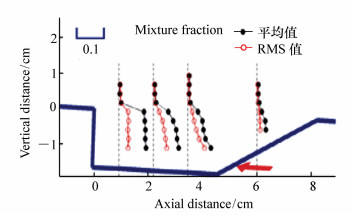
 Abstract
Abstract FullText HTML
FullText HTML PDF 5464KB
PDF 5464KB


